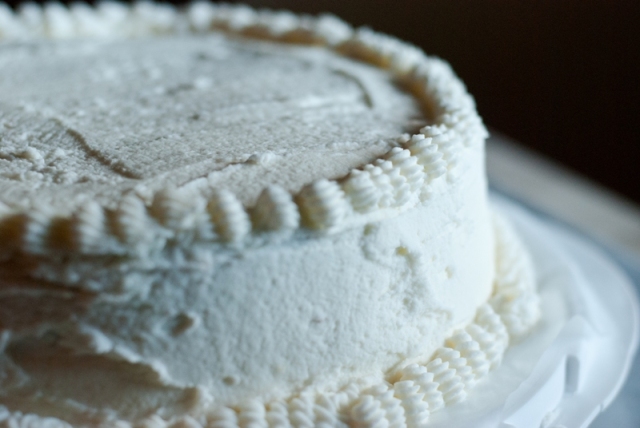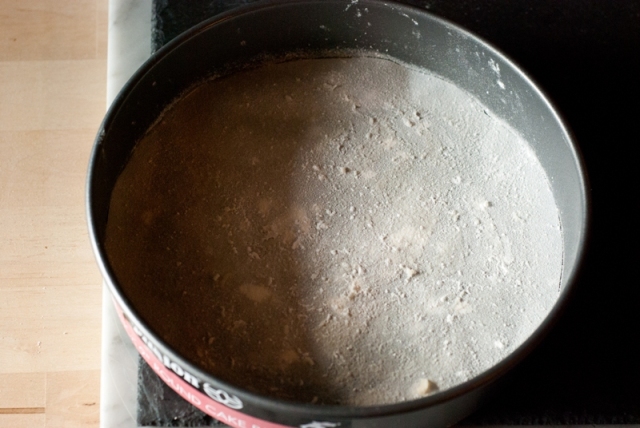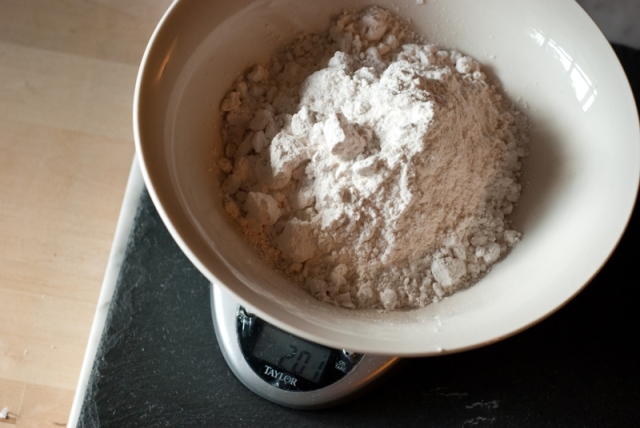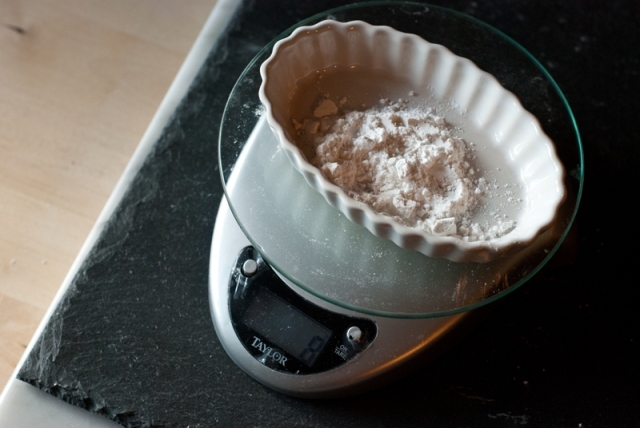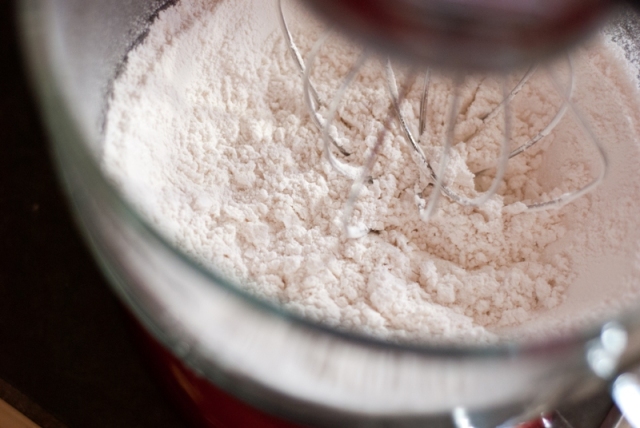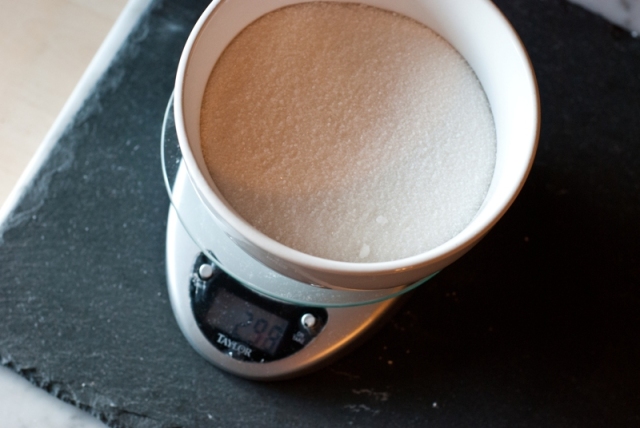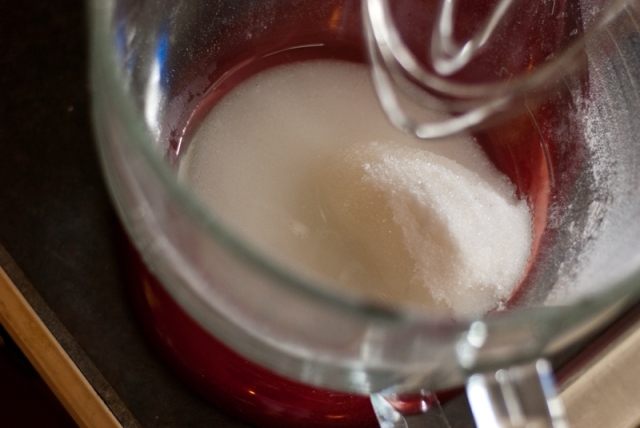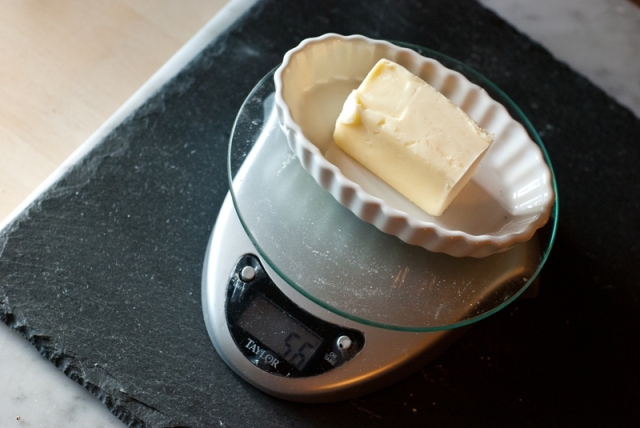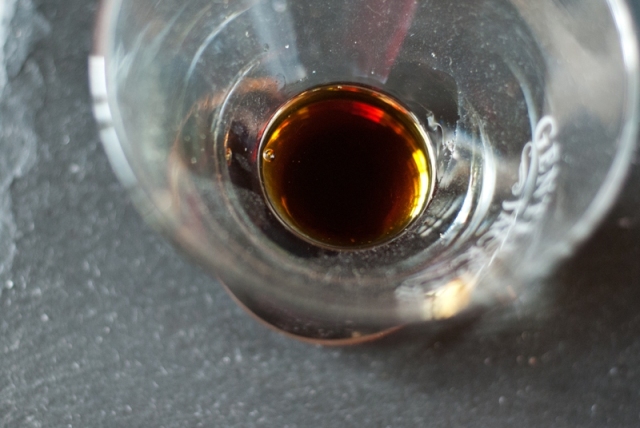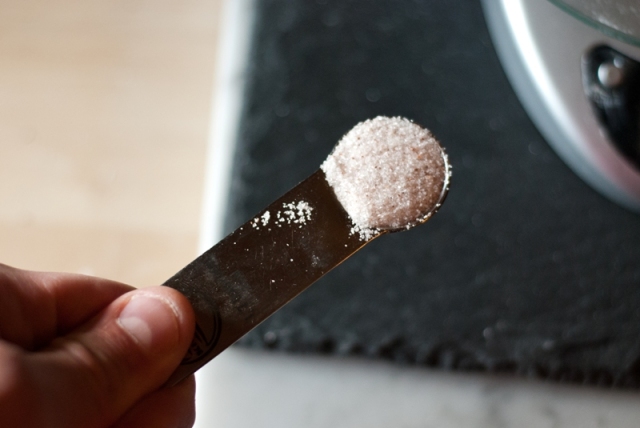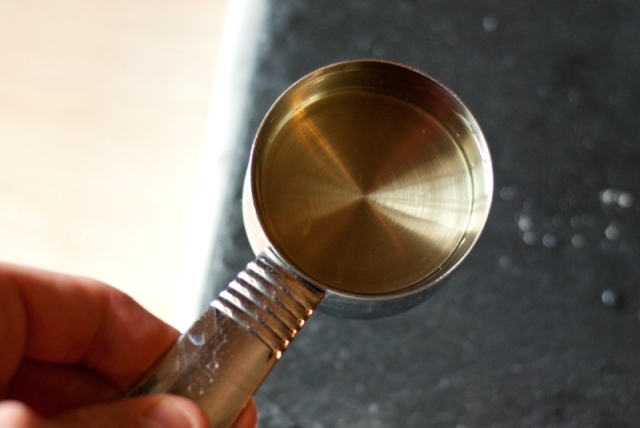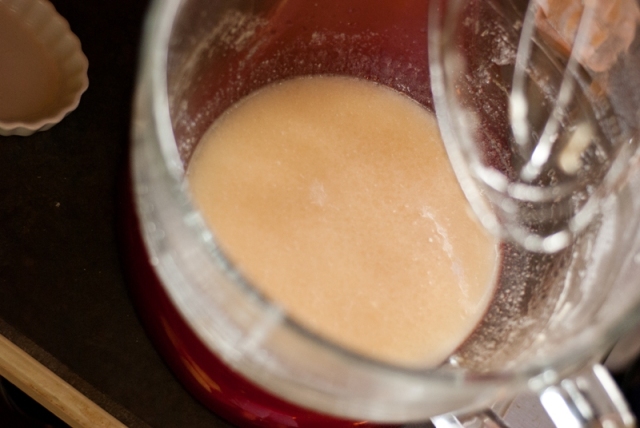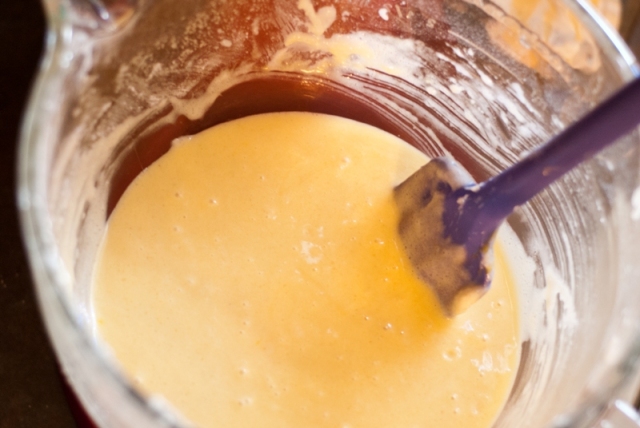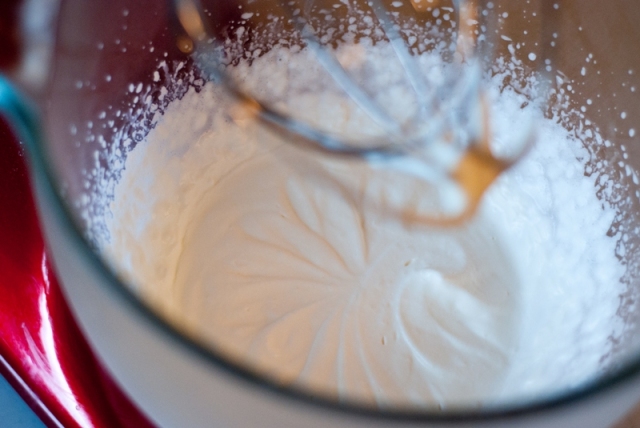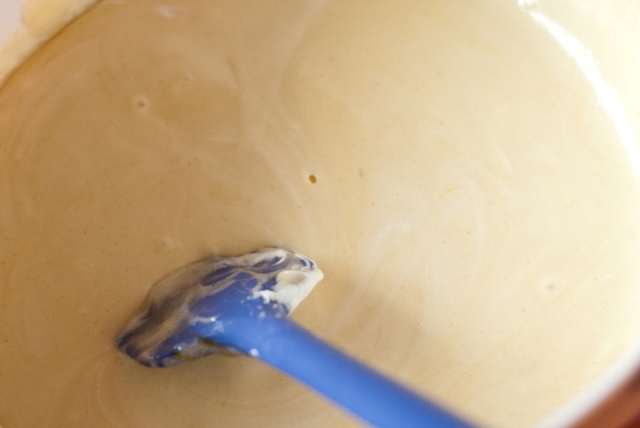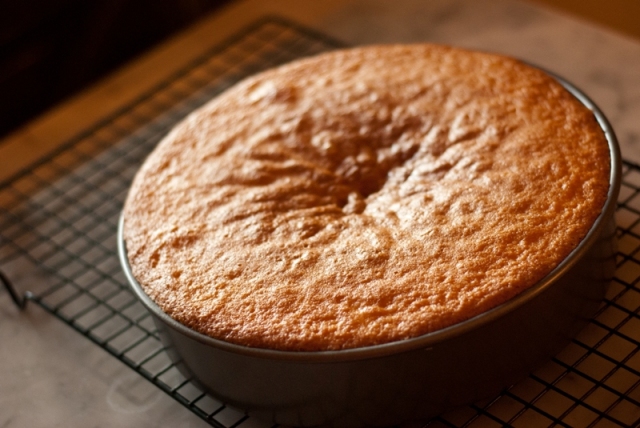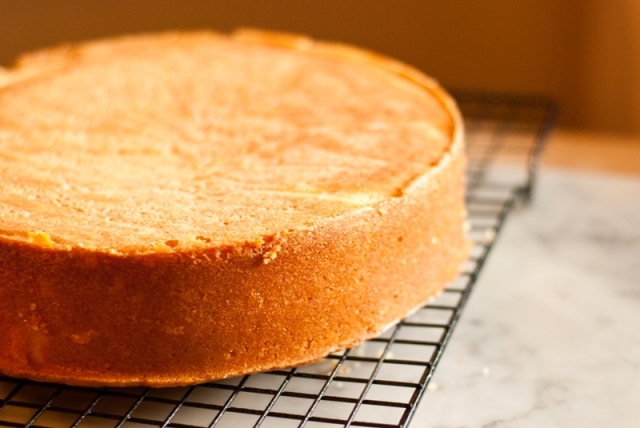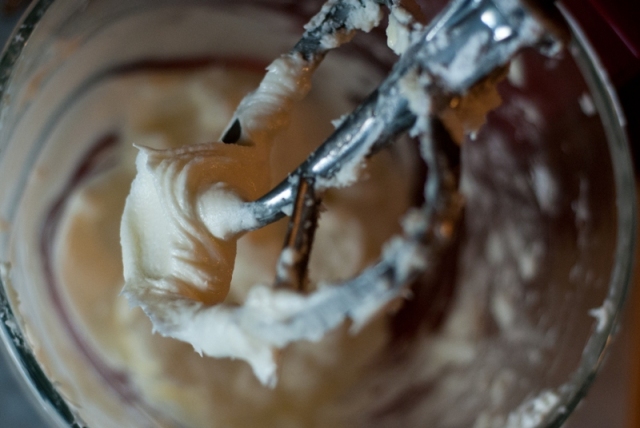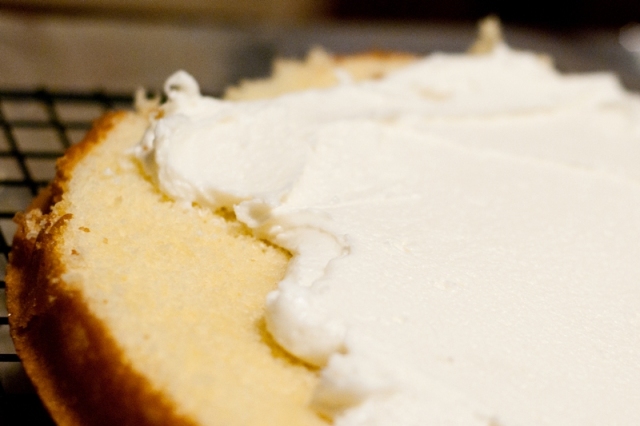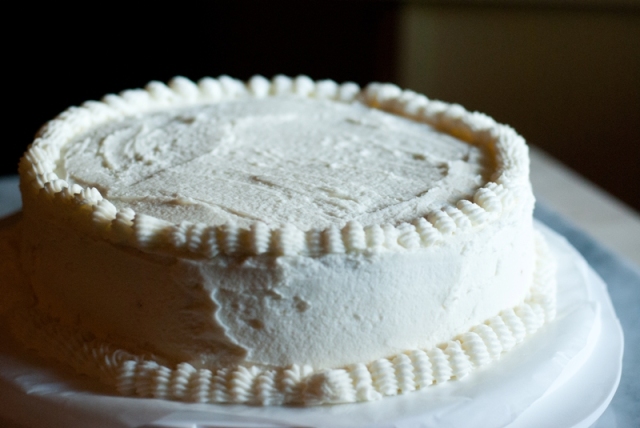So we got to thinking in the shoe box the other day: if this blog is going to serve as the predecessor to a bakery, we had better start mastering one of the foundational components of any sustainable bakery: cake. Although we do our fair share of cookies, yeast-risen doughs, and simple quick breads, a cake and icing from scratch was still uncharted territory. Yes, we know. Crazy, right? Well, while we have aspirations for a future bakery, we are quick to acknowledge the lack of some essential expertise. 🙂
For this maiden voyage into the complexities of cake, we turned to Shirley Corriher’s BakeWise, a scientific treatise on the art of baking, complete with over 200 detailed recipes. If you are interested in how bread flour differs from all-purpose flour, or want to know why Crisco is added to icing, this is the kind of book for you. It’s like throwing Alton Brown and Martha Stewart into a blender; or, maybe less graphic, if you combined the breadth of The Joy of Cooking with the depth of On Food and Cooking. Anyway, we think you get the idea. Great book.
For the cake, we flipped through numerous delicious (and slightly intimidating) recipes and finally landed on the “Magnificent Moist Golden Cake: Dissolved-Sugar Method.” There are two other methods in BakeWise for making this same recipe, the “Creaming Method” and the “Two-Stage Method.” We will likely try those in the future to compare.
Step 1: Preparing the oven. We set a baking stone on the bottom rack of the oven and preheated the oven for about an hour at 350 degrees.
Step 2: Preparing the cake pan. We layered the bottom with parchment paper, then sprayed the parchment paper with Pam and dusted it a bit with flour. Notice that the sides of the pan are not dusted: this would present a small issue later in the process.
Step 3: Sifting the flour and baking powder.
We decided to measure out most of our ingredients by weight, rather than volume, in the hopes of being as true to the recipe as possible (don’t worry, we’ll include volumetric amounts at the end). So, we started with 201 grams of cake flour.
Followed by 8 grams of baking powder.
We beat these two ingredients on high for about 30 seconds in the stand mixer, then transferred them to a separate bowl.
Step 4: Dissolving the sugar and mixing it with the butter.
We then measured out 298 grams of sugar while about 1/2 cup of water came to a simmer on the stove.
Then we transferred the sugar to the mixing bowl and added 1/3 cup of the simmering water. We beat this mixture for 10 seconds or so until the sugar was dissolved. We then beat into this sugar solution the following:
56 grams of unsalted butter,
2 teaspoons pure vanilla extract, and
1/2 teaspoon of sea salt.
After beating together these ingredients, we added 1/3 cup of canola oil and blended on medium for about 10 seconds. At this point, the mixture looked like this:
Step 5: Incorporating the flour into the wet ingredients. Into the stand mixer bowl we now added the flour-baking powder mixture, about 1/3 cup at a time, blending on low to minimize the amount of beating, until all of the ingredients were well mixed.
At this point, we took our mixing bowl off the stand mixer and stirred in, by hand and one at a time, 3 large egg yolks and 2 large eggs. At this point the mixture looked like this:
Step 6: Whipping the cream. We transferred this mixture into a separate mixing bowl, cleaned out the stand mixer bowl and beater attachment, and placed the stand mixer bowl, beater, and 1/2 cup of heavy cream into the freezer for 5 minutes.
We then whipped the cream just beyond the soft peak stage (about 2 minutes and 10 seconds on high), and then gently stirred/folded the whipped cream into the batter mixture in order to lighten the batter. Here is the batter mixture just before going into the cake pan:
After pouring the mixture into the cake pan, we dropped the pan from a height of about 4 inches in order to remove air bubbles, then placed the pan directly on the baking stone and baked for exactly 40 minutes, per the recipe instructions.
You’ll notice that the cake has fallen a bit in the center, which happened when we decided to measure the internal temperature with a temp probe at the 35 minute mark. As it turns out, we should have just trusted the recipe. At the 40 minute mark, the internal temperature read 209 degrees, exactly what the recipe called for. Other methods to check for doneness that the recipe mentioned:
1) Toothpick Test: a toothpick inserted into the center should come out clean but moist (again you risk causing the center to fall if you check too early)
2) Spring Test: the center should spring back when touched (again, risky).
3) Edge Test: the edges of the cake should just be about to pull away from the sides of the pan when it is ready to come out of the oven.
We let this cake cool on a rack for about 20 minutes, then turned the pan upside down and shook the pan until it slid out onto a sprayed cooling rack. This is the step that tore some of the sides off the cake, due to the fact that we failed to dust the sides of the cake pan. We won’t make that mistake again.
As you can see, the slightly-fallen center isn’t a big deal, because that becomes the bottom of the cake when you turn it out of the pan. We were very pleased with the texture of what was to become the top of our cake.
Now, for the icing.
We wanted something traditional, wedding-cake like in our icing, so we chose, from the same cookbook, the “Basic Confectioners’ Sugar Buttercream” recipe. By this time the sun was setting and we were losing our nice natural light for photos, so we’ll walk you through the process in words.
With the paddle attachment on our stand mixer, we whipped 113 grams of unsalted butter until soft, then whipped in 95 grams of Crisco. Then, on low speed, we beat in 1 teaspoon vanilla extract and 1/8 teaspoon (4 drops) of almond extract. Next, we sifted into this fat mixture 454 grams of 10x confectioners sugar and beat on the lowest speed, scraping down the sides of the bowl periodically. Then we stirred 1/4 teaspoon sea salt into 2 tablespoons of whole milk until the salt was dissolved, and mixed this salt-milk solution into the icing on low speed just until the icing became smooth and creamy.
The recipe says that you can add a little more milk or confectioners’ sugar to adjust the consistency, as desired, but we found that the recipe ingredient amounts provided a nice texture as-is.
Before icing the cake, we cut it in half using a long serrated bread knife. To ensure a level cut, we first used the knife to make a shallow scribe line around the entire circumference of the cake, then started on one end and cut using long, smooth strokes. We applied the icing using a spatula and created a more finished look using a piping bag.
In the soft morning light, our first attempt at cake from scratch didn’t look half bad. We took the finished product to the lake to share with family, and our gracious taste-testers were very pleased with the flavor, moistness, and fluffiness, saying that it reminded them of wedding cake. The only critique was that it was a bit sweet, maybe too sweet for some, which we think was the result of using too much icing (we actually doubled the icing recipe so we’d have enough to repair the rugged edges where the cake stuck to the sides of the cake pan). We think that we’ll definitely use a much thinner layer of icing on both the center and the top and sides next time around. But besides this small glitch, we were very pleased with the results.
The biggest lesson learned: those wedding cake makers really earn their money. We just can’t begin to imagine how they scale up this whole process both in size and quantity, and then add to that the multitude of customizations that are requested. Our hats go off to those true pastry chefs, as we humbly recognize that we have volumes to learn. All in all, this was a really fun process and we can’t wait to try again.
Here are the recipe ingredients, as promised.
Magnificent Moist Golden Cake (from Corriher’s BakeWise)
- Nonstick cooking spray
- 1 3/4 cups (201 g) spooned and leveled cake flour
- 1 3/4 teaspoons (8 g) baking powder
- 1 1/2 cups (298 g) sugar
- 1/3 cup water
- 4 tablespoons (57 g) unsalted butter
- 2 teaspoons pure vanilla extract
- 1/2 teaspoon (3 g) salt
- 1/3 cup canola oil
- 3 large egg yolks
- 2 large eggs
- 1/2 cup heavy cream
Basic Confectioners’ Sugar Buttercream (from Corriher’s BakeWise)
- 1/2 cup (113 g) unsalted butter
- 1/2 cup (95 g) Crisco
- 1/8 teaspoon pure almond extract
- 1 teaspoon clear vanilla flavoring (we used extract)
- 1/2 teaspoon butter flavoring (optional – we did not use this)
- 4 cups (454 g) 10X confectioners’ sugar
- 1/4 teaspoon salt
- 2 tablespoons whole milk
- 1 tablespoon light corn syrup (optional, for sheen – we did not use this)

